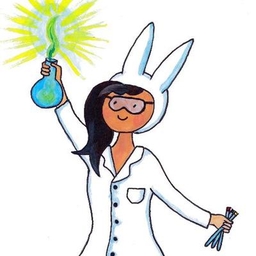
Katrina Krämer
Associate Editor at Nature
Science journalist, once-upon-a-time chemist, casual hexagon-enjoyer. Formerly @ChemistryWorld and @Nature Briefing, now @UK_Biobank.
Articles
-
Jul 29, 2024 |
nature.com | Katrina Krämer
Hello Nature readers, would you like to get this Briefing in your inbox free every day? Sign up here. ‘I feel good with mum’ neurons discoveredResearchers have pinpointed the brain cells that encode the mother–baby bond in infant mice. Interacting with their mother activates neurons that produce the hormone somatostatin, which regulates many other hormones and body processes. In adult mice, somatostatin neurons are associated with anxiety and fear.
-
Jul 28, 2024 |
nature.com | Katrina Krämer
Hello Nature readers, would you like to get this Briefing in your inbox free every day? Sign up here. AI fed AI-generated data spews nonsenseTraining successive versions of artificial intelligence (AI) models on text generated by the previous iteration quickly leads to the system producing gibberish. This collapse happens because each new model learns not from reality, but from the previous model’s prediction of reality, with errors getting amplified over time.
-
Jul 24, 2024 |
nature.com | Katrina Krämer
Hello Nature readers, would you like to get this Briefing in your inbox free every week? Sign up here. Astronomy method unmasks deepfakesA method that astronomers use to survey light from distant galaxies can reveal whether an image is AI-generated. By looking for inconsistencies in the reflection of light sources in a person’s eyes, it can correctly predict whether an image is fake about 70% of the time.
-
Jul 19, 2024 |
nature.com | Katrina Krämer
If you’re in the United Kingdom and have a slug to spare, why not send it to the team that is investigating slug-resistant wheat? You can sign up for a ‘slug scout’ pack, which includes containers and pre-paid postage envelopes. Just don’t pick the wrong species:“There is a slug called the leopard slug,” says project leader Tom Allen-Stevens.
-
Jul 16, 2024 |
nature.com | Katrina Krämer
Hello Nature readers, would you like to get this Briefing in your inbox free every week? Sign up here. Whale ‘phonetic alphabet’ revealed by AISperm whales (Physeter macrocephalus) structure their communication in ways similar to how humans form language: sound units combine into words and words combine into sentences. Researchers used an AI algorithm to sift through thousands of whale ‘codas’, sets of up to 40 rapid-fire clicks. They found almost 10 times as many codas as previously described.
Try JournoFinder For Free
Search and contact over 1M+ journalist profiles, browse 100M+ articles, and unlock powerful PR tools.
Start Your 7-Day Free Trial →X (formerly Twitter)
- Followers
- 3K
- Tweets
- 4K
- DMs Open
- Yes

Hi @BIOROB_EPFL, I'd like to feature your work on Krock in the Nature Briefing: AI & Robotics newsletter - would you mind sending me a DM?

Hi @alban_dasilva2, I wrote you an email about use of an image from your Scientific American article but not sure if I have the right email address. Would you mind sending me a DM, mine are open :)

Hi @TschanzPhilippe, this is Katrina from the Nature Briefing. I've been trying to reach you, would you mind DMing me?
